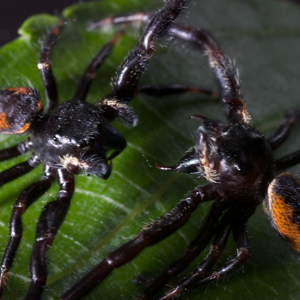Whether it’s resources, territories, or mates, nothing comes for free. To gain access to any of these factors necessary for reproduction, individuals need to be able to outcompete rivals. In most cases, it is some morphological trait that determines outcomes—larger, heavier males with bigger weapons are competitively superior. These traits, however, are not absolute and actually decrease in importance the more similar in size opponents are. Is there some aspect that can better describe a more competitive male?
Our research explores the various other factors important in determining contest outcomes, highlighting the environmental, social, or underlying physiological factors involved in contest outcomes. We’ve demonstrated the importance of understanding the value of the resource under contention, that past experiences can shape future success, and that an individual’s underling metabolic rate can explain their likelihood of winning. We’ve only scratched the surface, and we hope to explore many other facets of competition to understand what makes a winner.
Researchers involved: Michael Kasumovic, Damian Elias, Frank Seebacher, Vincent Duong

